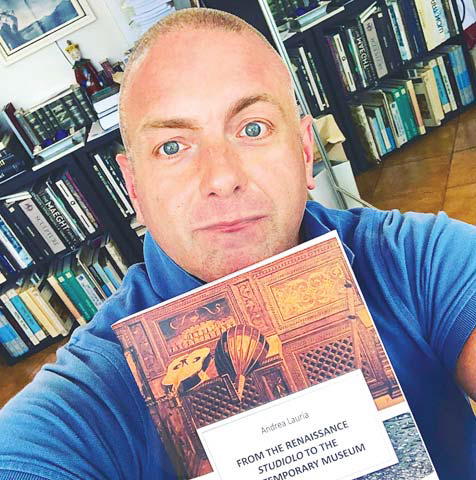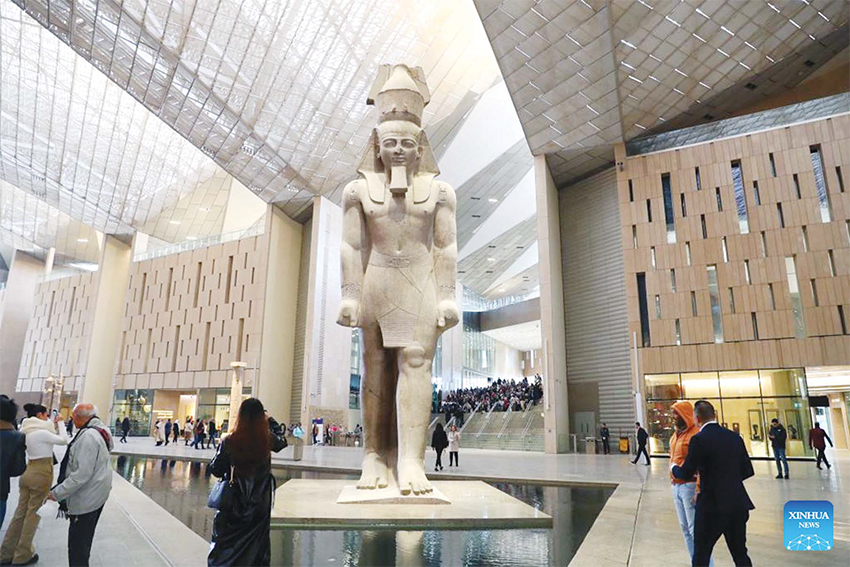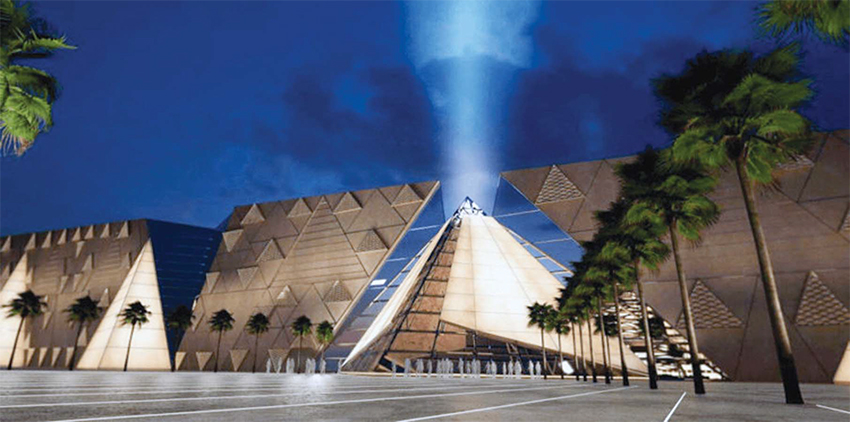06/07/2023
06/07/2023
The dialogue the museum establishes with the pyramids is not only aesthetically effective but also very symbolic.

Prof. Andrea Lauria is an Italian museologist graduated from Rome’s Academy of fine arts. He also holds a History of Art degree from University di Roma Tre in Rome. Andrea Lauria lectures a Masters course in museology at Rome’s Universities Tor Vergata and American Temple University (Rome Campus). In 2020 he has become a published author of the book: “From the Renaissance studiolo to the contemporary museum” which is also his course manual. Lauria’s field of research is the phenomenon of hyper-museums with special attention to the Arabian countries in comparison with the western world

In my column I have mainly explored museums in the Arabian Peninsula except when I have written about the National Museum of Egyptian Civilization (NMEC). In addition to the Gulf countries, the phenomenon of hyper-museums also began in Egypt which, despite not having the same economic resources as the Gulf countries has nevertheless understood the media power of hyper-museums and how through the hyper-museums they can change the image of their country.
The two Egyptian hyper-museums are the National Museum of Egyptian Civilization (NMEC) inaugurated in 2021, that I have already mentioned, and the Grand Egyptian Museum (GEM) that has been established in March 2023, both are located in Cairo. Also known as the Giza Museum, The Grand Egyptian Museum GEM is an archaeological museum located next to the Giza Pyramids.
The museum was inaugurated in March 2023 but in fact it was only partially opened because as is the practice the Egyptian museums are opened in stages, not when the museums are completely ready. We don’t know how there are going to be galleries but when the Museum will be completed it will host over 100,000 artifacts that belong to the ancient Egyptian civilization, including the complete Tutankhamun collection, and is set to be the largest archaeological museum in the world.

The GEM will also be hosting permanent exhibition galleries, temporary exhibitions, special exhibitions, children museum and virtual and large format screens with a total floor area of 32,000 square meters. Temporarily only the central museum’s Great Hall is accessible to the public, the latter is impressive due to its large size which is emphasized by the presence of the huge statue of King Ramses II. The Statue of Ramses II, depicting him standing, is made from limestone, weighs 83 tons and is 3,200 year old.
It was discovered in 1820 at the Great Temple of Ptah near Memphis, Egypt by Italian Giovanni Battista Caviglia --explorer, navigator and Egyptologist, one of the pioneers of Egyptian archeology of his time. He was influential in the excavation of the Sphinx of Giza near Cairo. From the Grand Hall, when the museum will be completely open, visitors will begin their journey to discover different facets of Ancient Egyptian history, through thousands of unique artifacts and video and audio presentations.
What makes the museum extraordinary is that many pieces in its collection will be displayed for the first time. If we cannot talk about the internal set up because it is not finished yet, we can analyze the museum’s structure and project. For sure the GEM is an important landmark that has a strong impact on the territory where it is located. The museum is sited on a plot of land of about 490,000 square meters (5,300,000 sq ft) which makes it the world’s biggest museum, approximately 2 kilometers (1.2 miles) from the Giza pyramid complex and was built as part of a new master plan for the Giza Plateau called Giza 2030.
The history of the project started in January 2002, when the Egyptian government announced a global competition for the design of a new museum complex to house the enormous historical and artistic heritage of Egypt that has not found a place in the Egyptian museum in Tahrir Square. The following year, in 2003, the victory of the Irish studio Heneghan Peng Architects was announced, a studio founded by Róisín Heneghan and Shih-Fu Peng. The company was founded in New York in 1999, but later moved to Dublin in 2001 and as of 2021 is based in Dublin and Berlin.
The Heneghan Peng Architects studio has won several important commissions for important architectural works which have also made the studio win important architectural awards such as the RIBA European Award in 2006 with the L’Áras Chill Dara project in Kildare, in 2013 for the design of the Giant’s Causeway Visitors’ Center won the RIBA National Award, a project which was also nominated for the Stirling Prize in 2013. In 2019 the studio won the Aga Khan Award for architecture for the Palestinian Museum project. The landscape and site masterplan was designed by West 8, The exhibition masterplan, exhibition design and museology were designed by Atelier Brückner. As I told you before even if the Egyptian hyper-museums are different from the Gulf hyper-museums, they are still interesting to analyze from a museographic and architectural perspective; but let’s see together why the Egyptian museums are different from the museums of the Gulf.
If one of the main features of the hyper-museum is that it is the principal work of art of the collection with a strong artistic identity and a shape that recall a sculpture, as in the case of the Louvre Abu Dhabi, we cannot find these features in the GEM. However the museum is huge spectacular and definitely a strong landmark is and the dialogue with the territory and the pyramids of Giza is amazing. The building is shaped like a chamfered triangle in plan. It sits on a site 2 kilometres west of the pyramids, near a motorway interchange.
The building’s north and south walls line up directly with the Great Pyramid of Khufu and the Pyramid of Menkaure. When an architect has to design a contemporary building in a district, a city or an area of historic-artistic value is never easy, designing a contemporary architecture in such a fragile and historically artistically important area next to The Giza pyramid complex is a very challenging task. Regardless of this I must say that the project designed by the Irish studio Heneghan Peng Architects is very effective. Although being huge building and with implosive volumes the museum fits perfectly and harmoniously into the territory Giza pyramid complex. The dialogue it establishes with the pyramids is not only aesthetically effective but also very symbolic.
The Giza pyramid complex hosts the Great Pyramid, the Pyramid of Khafre, and the Pyramid of Menkaure. They were built during the Fourth Dynasty of the Old Kingdom of ancient Egypt, between 2600 and 2500 BC. These pyramids represent the old Egyptian old heritage. Conversely the new museum designed by Heneghan Peng Architects represents the contemporary Egypt. The visual dialogue that architects have created lining up the building’s north and south walls directly with the Great Pyramid of Khufu and the Pyramid of Menkaure is extraordinary and a cool idea. As I have already said in the past I do not understand the management of Egyptian museums and their choice of partial openings of their contemporary museums.
Despite this I am convinced that after the opening of all the GEM’s halls, this place (area) will become an effective synthesis between the past, pyramids, and the present, the new Grand Egyptian museum and its rich and important historical and artistic heritage. Egypt does not have collections of modern or contemporary art but only an immense archaeological heritage which inevitably attracts only a certain type of tourists interested in archeology. Investing in contemporary architecture by creating contemporary museums as National Museum of Egyptian Civilization (NMEC) and the Grand Egyptian Museum (GEM) two powerful landmarks is an excellent idea to project Egypt into 21st century museography. By Andrea Lauria


